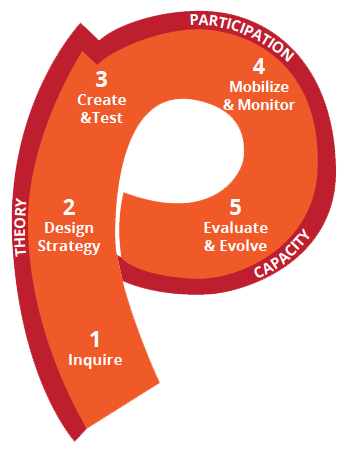Strategic SBCC Design for Emergencies
 There are a number of models that guide the planning of SBCC programs, most of which are founded on a set of shared principles. One of these models is the P-Process™ which provides a step-by-step roadmap to guide the user from a loosely defined concept about changing behavior to a strategic and participatory program that is grounded in theory and has measurable impact (CCP, 2014).
There are a number of models that guide the planning of SBCC programs, most of which are founded on a set of shared principles. One of these models is the P-Process™ which provides a step-by-step roadmap to guide the user from a loosely defined concept about changing behavior to a strategic and participatory program that is grounded in theory and has measurable impact (CCP, 2014).
The P-Process has the following five steps:
- Step 1: Inquire
- Step 2: Design the Strategy
- Step 3: Create and Test
- Step 4: Mobilize and Monitor
- Step 5: Evaluate and Evolve
Four crosscutting concepts are embedded in the P-Process, which, when integrated in each step of the strategic process, ensure that SBCC approaches are most effective:
- SBCC theory
- Stakeholder participation
- Continuous capacity strengthening
- Iterative research and evaluation
Although emergencies require the rapid development and implementation of SBCC activities, the P-Process can nonetheless help inform emergency SBCC interventions and serve as a guide for implementers.

